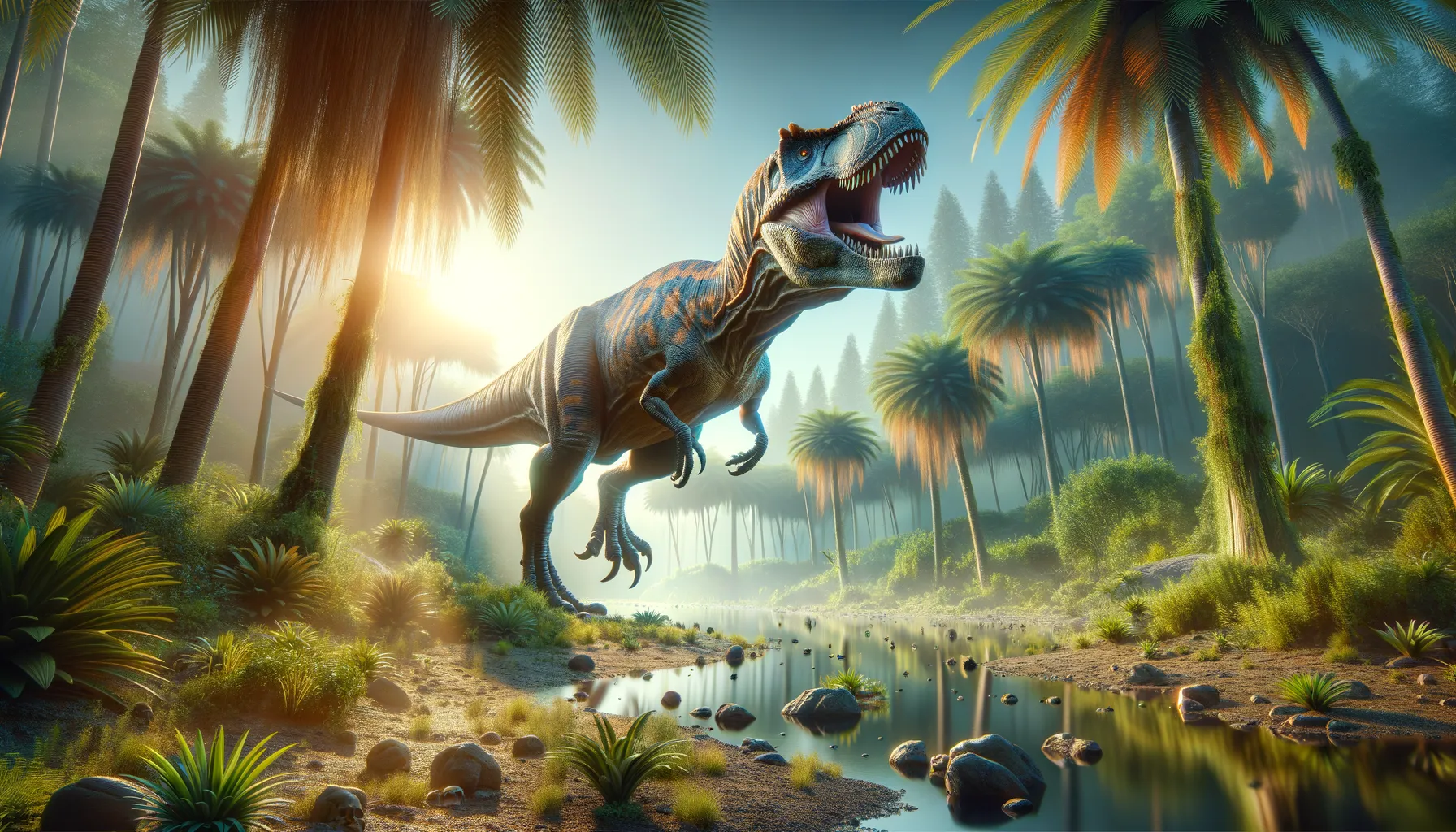
Daspletosaurus
Fierce predator of the prehistoric plains.
Period
Cretaceous
Length
Measured about 8 to 9 meters in length.
Height
Stood approximately 3 meters tall at the hip.
Weight
Weighed about 2.5 tonnes.
Daspletosaurus was a large theropod dinosaur closely related to Tyrannosaurus. It roamed the Earth during the Late Cretaceous period, approximately 77 to 75.5 million years ago. This formidable predator possessed sharp teeth, powerful jaws, and a robust build that made it an apex predator in its ecosystem. Fossils of Daspletosaurus provide important insights into the evolution of theropods and their transition to birds.
Diet
Daspletosaurus was a carnivore, feeding primarily on large herbivorous dinosaurs. Its sharp teeth and strong jaws suggest it could easily tear through flesh.
Hunting
Likely used ambush tactics to surprise its prey. Hunting alone or possibly in small family groups, it targeted large herbivores like hadrosaurs and ceratopsians.
Environmental challenges
Daspletosaurus faced competition from other large theropods in its ecosystem. Climatic fluctuations during the Late Cretaceous might have influenced food availability. Occasional droughts and volcanic activity could pose survival threats, altering habitable landscapes.
Speed
Daspletosaurus was relatively fast for its size but not the fastest, likely reaching speeds of 25 to 30 km/h.
Lifespan
Estimates suggest Daspletosaurus lived around 25 to 30 years.
First discovery
Discovered in the early 1970s in Alberta, Canada.
Fun Facts
- Daspletosaurus means 'frightful lizard' and is known for being a fearsome predator.
- It lived around 77 to 74 million years ago during the Late Cretaceous period.
- Daspletosaurus was a close relative of the infamous Tyrannosaurus rex, and looked quite similar to it, only slightly smaller.
- Fossils of Daspletosaurus have been found in North America, with significant finds coming from Alberta, Canada.
- It likely was both a predator and a scavenger, taking advantage of whatever food sources were available.
- Daspletosaurus had sharp teeth that were ideal for slicing through the flesh of its prey.
- It had strong hind limbs for running and short arms with two-fingered hands, similar to those of T. rex.
Growth and Development
Daspletosaurus grew rapidly during its juvenile phase, accelerating its mass and size. Like many theropods, it experienced most of its growth in the first few years. Once reaching adulthood, growth would have slowed significantly.
Habitat
Lived in a variety of environments, including river valleys and coastal plains. These areas provided abundant food sources and open spaces for hunting. Forested areas within these regions offered shelter and nesting sites.
Interaction with other species
Competed with contemporaneous predators for food resources. Might have had fierce encounters with other large carnivores over territory and prey. Its primary prey were large herbivorous species such as hadrosaurs.
Natural lifespan
When undisturbed, it could live up to 30 years.
Reproduction
Egg-laying like many non-avian dinosaurs, with nests constructed in secluded areas. Parent Daspletosaurus likely provided some care to the young in the form of protection. Fossil evidence indicating nesting behavior is scarce but suggests communal nesting sites.
Social behaviour
Some evidence suggests they may have exhibited pack-like behavior. Social interaction might have included cooperation during hunting and raising young. Territorial and dominance displays would likely establish social hierarchy.
Fossil locations
Fossils primarily found in the Judith River Formation in Alberta, Canada. Additional specimens have been unearthed in Montana, USA. These fossil discoveries have enriched our understanding of Late Cretaceous ecosystems.
